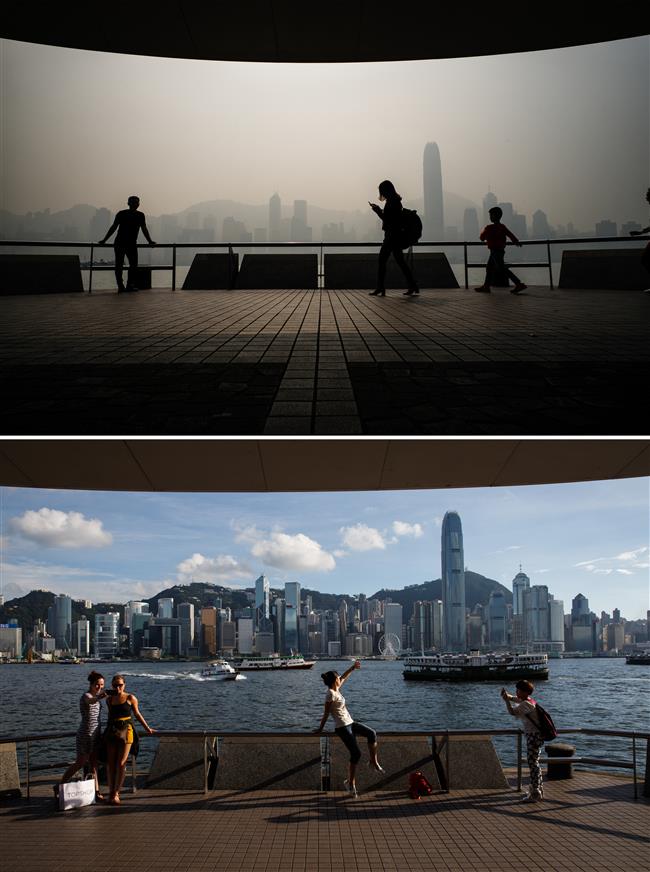HK debates air quality as smog covers city

This photo combo shows (top) tourists visiting a Kowloon promenade in front of Victoria Harbour as smog engulfs the Hong Kong skyline in the background on January 22, 2018 and (bottom) tourists posing in front of Victoria Harbour and a clear view of the Hong Kong skyline in the background in a file photo taken on June 24, 2016. Hong Kong's famous skyline was engulfed in smog on January 22, with residents urged to stay indoors.
HONG Kong’s famous skyline was engulfed in smog yesterday and residents were urged to stay indoors.
The winter months regularly bring worse air quality to Hong Kong and other parts of the region due to wind direction and weather conditions.
But as acrid air shrouded the city’s skyscrapers, harbor and surrounding hills, residents said they were afraid for their health.
“It feels stuffy and airless. It’s more difficult to breathe,” said Elsa Choi, 32. “I’m not sure if masks could filter out (the particles). I won’t go outside as much.”
The air quality in Hong Kong was categorized as “unhealthy” on the World Air Quality Index.
Readings of damaging fine particles known as PM 2.5 hit an average concentration of 198 micrograms per cubic meter.
The World Health Organization recommends a maximum average exposure of 25 micrograms per cubic meter in a 24-hour period.
In Beijing, where pollution has reached hazardous levels in the past, the average reading was 25, categorized as “good.”
The government said that pollution in Hong Kong was higher than normal and that the risk to health was “very high,” as it warned residents to avoid outdoor activities.
Schools were urged to take “appropriate measures” to safeguard students’ health.
The environment bureau blamed the smog on a mix of light winds, preventing dispersion of pollutants, and sunshine which it said worsens the problem. But campaigners said authorities should not simply look to the weather.
“We know that there is a weather factor but we also know that roadside air pollution comes from traffic,” said Patrick Fung of NGO Clean Air Network, who said there should be traffic controls on high pollution days.
A clean air plan was introduced in 2013, and the environment bureau has said roadside pollutants have dropped by up to 74 percent in the past 20 years. But the number of days where pollution readings were categorized as a high health risk in 2017 was almost double the number in 2016, according to statistics, although it was an improvement on 2014 and 2015.











